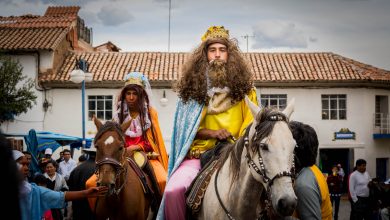Reflection on the Fiesta of Corpus Christi


Cuzco is a city of celebrations, hence the municipality formed its own public – private enterprise to organize and manage them, EMUFEC.

Yet many of its most important events are Catholic and organized by the diocese in conjunction with the various parishes and a whole array of brotherhoods and sisterhoods centered on the saints and service to them.

In this way, almost the entire society is drawn into the religious order of Cusco, making it an unusually Catholic city.


At the pinnacle this is the very old feast of Corpus Christi, the Body of Christ. It developed its strength early after the conquest, in a mix of the interests of the colonial administration and local Inca families. It filled the place of the now disappearing Inti Raymi and became the most important feast in the calendar of Cusco, a position it still claims.

Tomorrow, the eighth day (octave) of the feast, the Saints will leave the Cathedral where they have been —in family— since they came one week ago.

Stories are told about what the saints do in there and their conversations with the Lord of Temblors, the Holy Patron of Cusco. The lord only comes out during the next great religious feast of the round of celebrations, on the Monday of Holy Week. Otherwise he stays in the Cathedral and receives the devotions of Cusqueños young and old, who pray to him and make him gifts as they would with anyone in this society where coming empty handed is seen badly
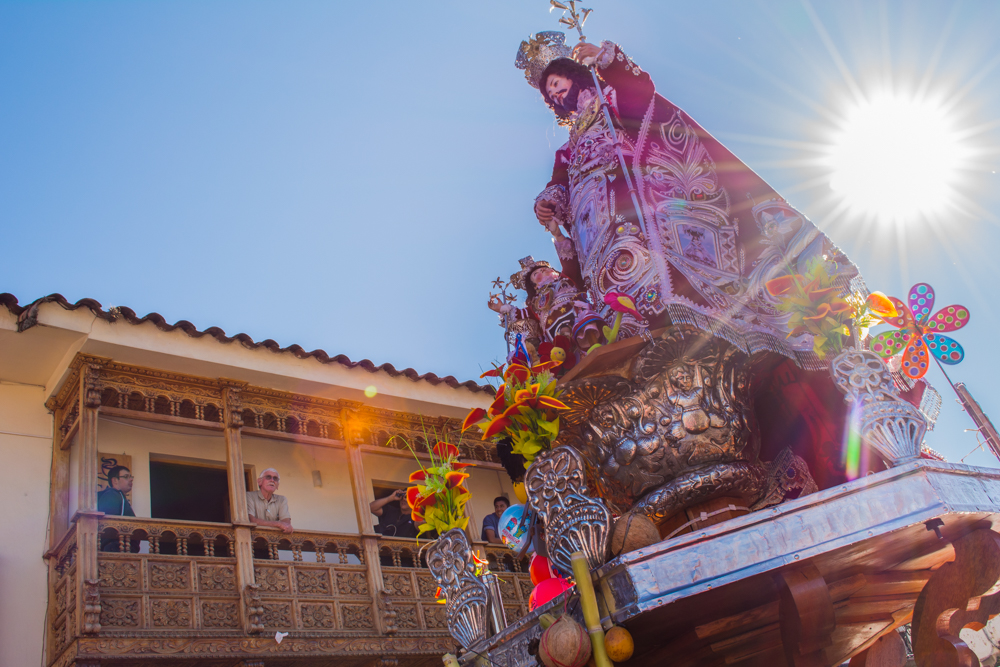
The Saints, like people and indeed like the members of any family, are said to have jealousies, loves, and loyalties. People look for their traces and try to understand them for the implications they might have on the people devoted to them and who depend on their will, the members of their parishes and the various brotherhoods and sisterhoods.
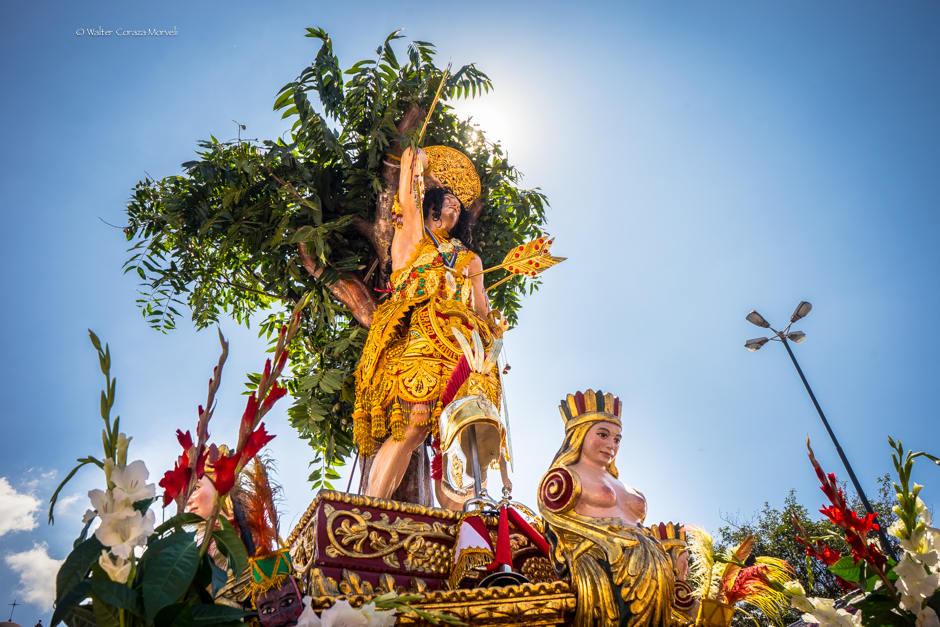
In many ways, the Saints are treated as non-human beings, a kind of people brought into society and taken care of for the good(s) they bring to it. This is a very old attitude to the cosmos and other beings which does not map cleanly on the formal Catholic notions of saints and their devotion to them though those are mobilized in Cusco by the priests and nuns and the very devout.

Each Saint has its story, its history, the elements of which are realized in the details of its presentation and its carriage. These are meant to lead people’s minds and hearts to God through the virtuous life of the saint as a model for how they should live. But people reinterpret them to fit with other ideas and traditions. Each Saint, as a result, stands at the center of a dense weaving of many different colors, each thread of which is a story or interpretation.

To these are added the personal stories of people and their interactions with the saints as they seek favor or simply bring their problems to them for consideration, or when they leave them offerings which are also codified, although there can be a bit of randomness here.
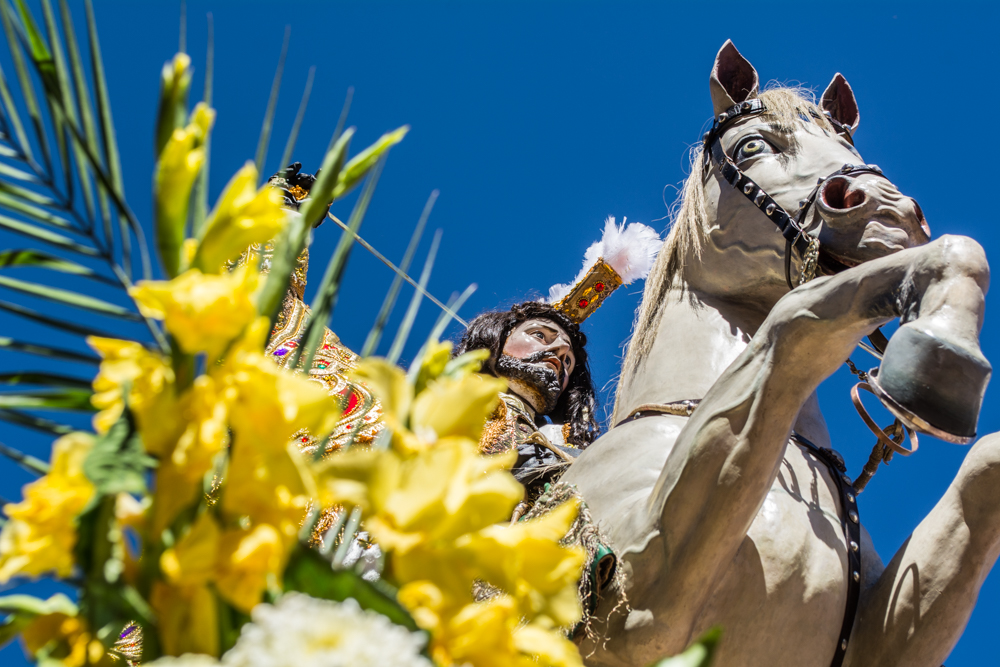
One easy example of re-reading the details of the images and fitting them into different universes is the image of Santiago. He comes on a rearing horse. Known as a martyr and the patron of Spain who made possible the reconquest of Iberia from the Moors, Santiago is also tied deeply into the history of Peru. He was the patron of the Spanish and, along with the Virgin, was said to have caused the defeat of the Inca forces arrayed against them. As a result, he is sometimes called “the Indian killer.”
Nonetheless, he began to fit into the Andean pantheon, in part because of the sound of his galloping hooves perhaps, and related with thunder and the divinity sometimes called Illapa and sometimes Thunupa, one of the great figures of the Inca and pre-Inca pantheon.
Most recently I heard people arguing he was not a real saint, because Santiago is a common first name and his does not take the San, marking saint, that is found on the other saints. The San in his name fused into invisibility in the commonness of the word as a first name. Its relationship to Iago or Diego is no longer easily perceivable.
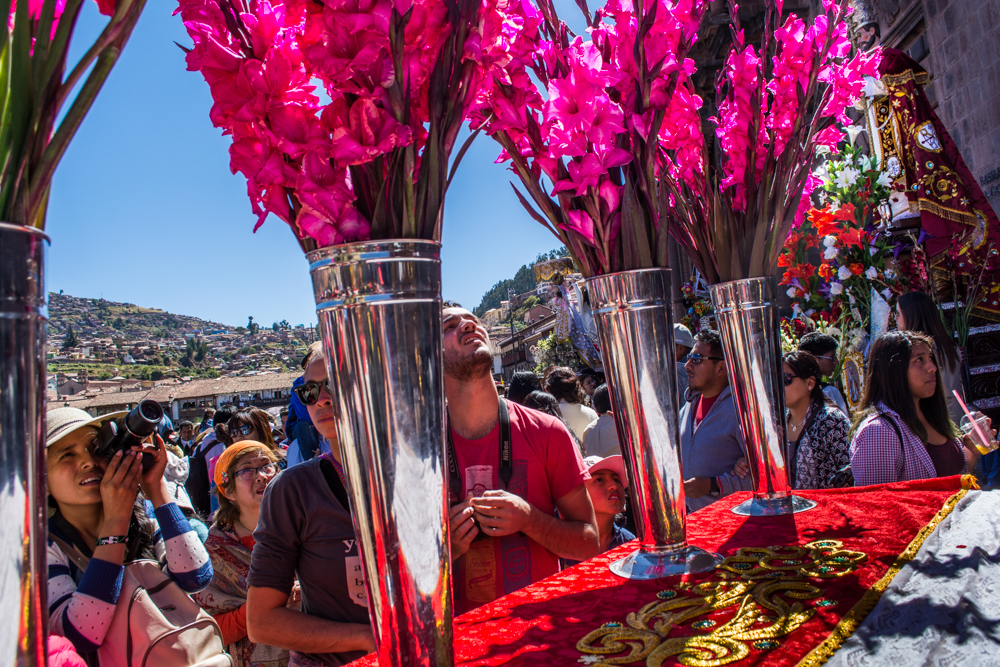
In the processions you see the complexity of faith and devotion to the Saints, whether from Cusqueños or even visitors.
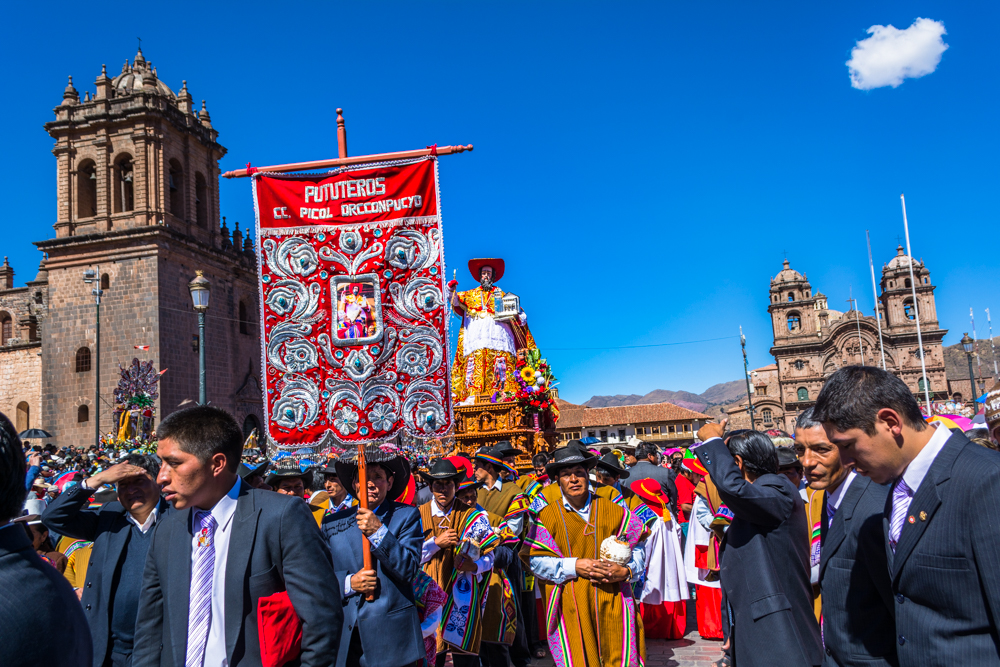
People show devotion by marching with the Saint in organized groups, in this case players of conch shells called pututus.

People invest money as a sacrifice to the saint to buy or rent elaborate costumes and then sacrifice time by dancing for their sacred figure. They often do this over the course of years and it is an important part of their social live and religious devotion.

Musicians, called kaperos, are hired to accompany the dances and to play music for the saint’s procession as a sign of devotion of the jurqados, the sponsors, although it is also an act of faith and devotion by the musicians. Some play without charge.
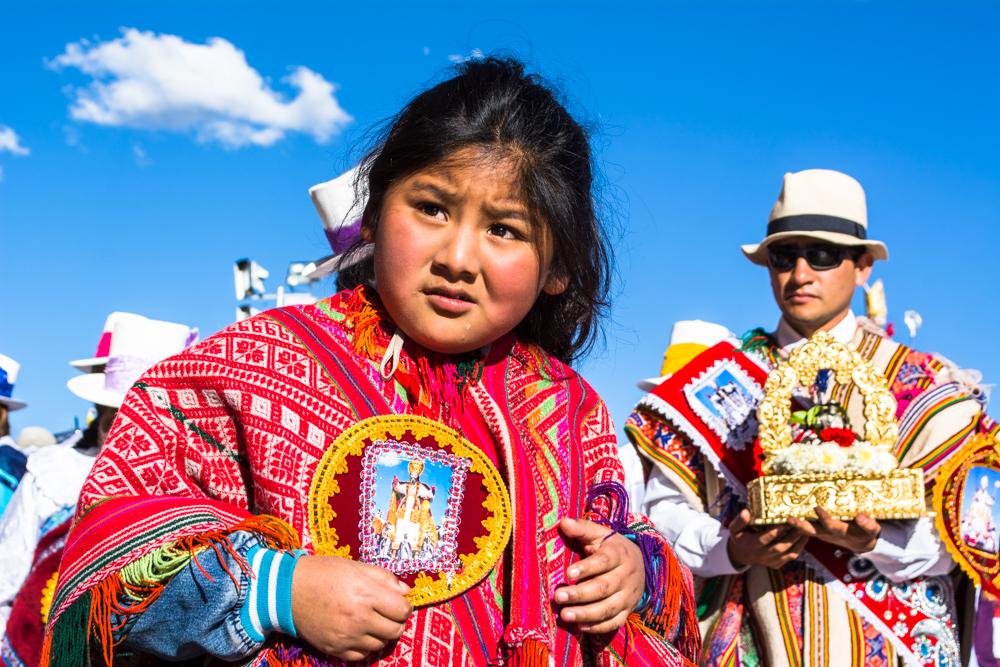
The jurqados invest sometimes impressive amounts of money in devotion to the saint and to their brotherhood and community. Each year a different set of jurqados is named and they lie at the root of the civil-religious celebrations in Cusco.

The saints and their carriages are heavy. It is an honor and a sacrifice, as well as a punishing task, to bear the saint on your shoulders in the procession. People take turns to stand under the weight of the holy image.

Boys volunteer to carry the wooden stand on which the saint will rest, in this case Santiago. In this way they prepare themselves to become bearers of the heavy saint in procession, part of a community, and members of Cusco’s society.

Along the procession’s route, people come in devotion and also eat the festive dish of Cusco, Chiriuchu, which is an edible model of the holy and of the union of diversity that draws together society and the feast of Corpus Christi with all its particular saints and groups.

The fiesta of Corpus Christi, like the other feasts and devotions in Cusco, is a world of color and tradition, represented in this case by a Maqta dancer.




